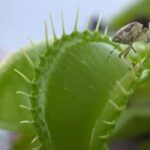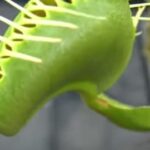As an Amazon Associate, this site earns commissions from qualifying purchases. For more details, click here.
The Venus flytrap (Dionaea muscipula) is one of the most fascinating carnivorous plants in the world, known for its unique ability to trap and digest insects. Despite its fame, many people are surprised to learn that Venus flytraps have an extremely limited natural range. These remarkable plants are native to a very specific region of the United States, with only small populations found elsewhere due to human cultivation.
Native Habitat
The only place where Venus flytraps naturally grow in the wild is the coastal plain of North and South Carolina, primarily within a 70- to 100-mile radius of Wilmington, North Carolina. They thrive in the nutrient-poor, acidic soils of wetland environments such as bogs, savannas, and wet pine forests. These habitats provide the ideal conditions for their survival, including high humidity, plenty of sunlight, and moist, sandy soil with poor nutrients. The lack of available nutrients in these environments is one reason Venus flytraps evolved to consume insects—they supplement their diet with nutrients like nitrogen and phosphorus, which are scarce in the soil.
Climate and Environmental Conditions
Venus flytraps require a warm, humid climate with moderate seasonal changes. Summers in their native habitat are hot and humid, while winters are cool but not harsh. They undergo a natural dormancy period in winter, during which growth slows significantly, and they survive with minimal energy use until warmer temperatures return in the spring.
Introduced and Cultivated Populations
Because of their popularity among plant enthusiasts, Venus flytraps have been cultivated in greenhouses and gardens worldwide. While they can be grown in controlled environments in various countries, wild populations outside their native range are extremely rare. Some small, introduced populations have been found in states such as Florida, New Jersey, and even parts of California, but these are not naturally occurring.
Conservation Concerns
Due to habitat destruction, poaching, and environmental changes, wild Venus flytrap populations have been declining. Illegal poaching is a significant threat, as some people harvest the plants from their natural habitat to sell them illegally. Conservation efforts are in place to protect them, and in some areas, Venus flytraps are legally protected under state and federal regulations.
Conclusion
Though Venus flytraps are widely available in nurseries and through commercial cultivation, their natural habitat remains limited to the wetlands of the Carolinas. Conservation efforts are crucial to preserving these unique plants in the wild. If you’re interested in growing one, consider purchasing from reputable sources to avoid contributing to illegal harvesting. The Venus flytrap remains one of nature’s most intriguing plants, demonstrating the incredible adaptability of life in challenging environments.

My fascination with carnivorous plants began many, many years ago with Venus Fly Traps. Now I am more than happy to impart what I know with other enthusiasts and those who are curious about meat eating plants.


